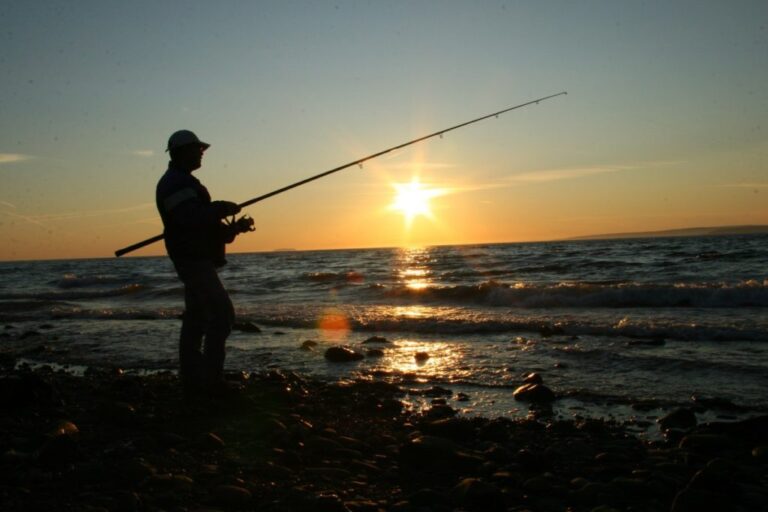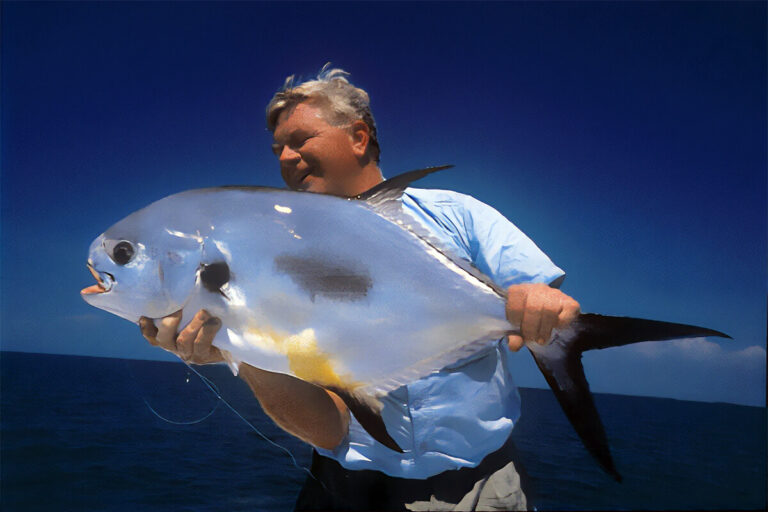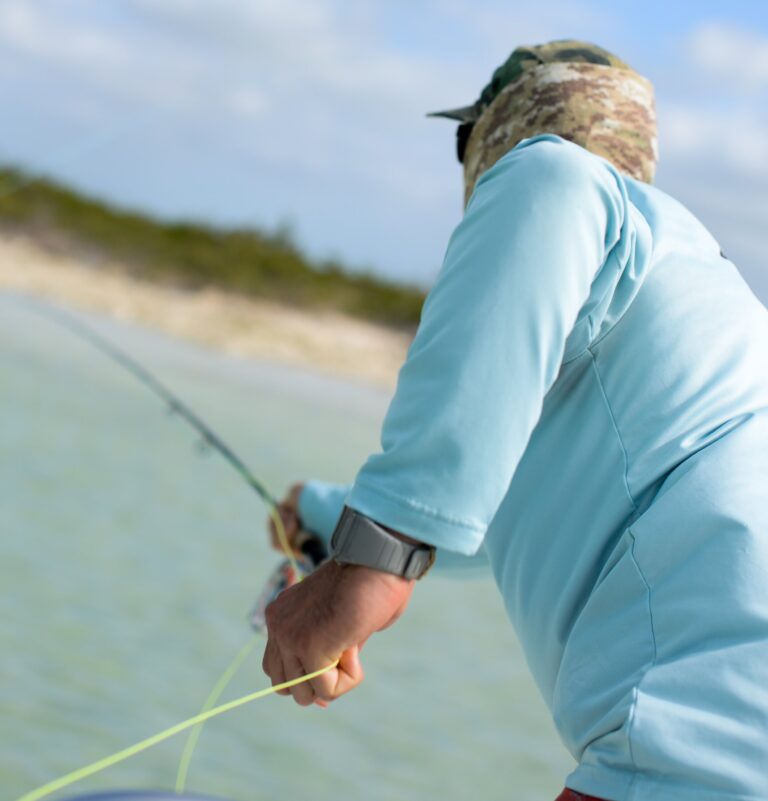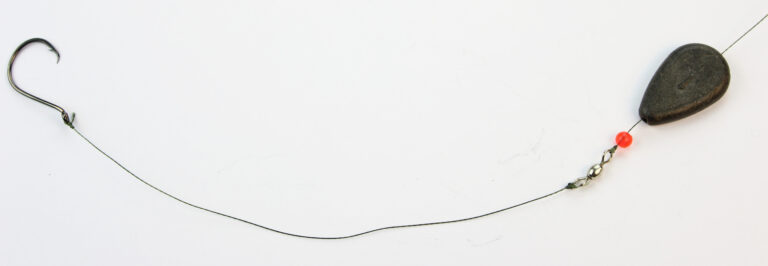The best lures for flats fishing include topwater plugs, soft plastic baits, and jerkbaits. These lures imitate the natural movement and appearance of prey, making them highly effective in attracting fish in shallow water environments.
In contrast, heavy jigs and spinnerbaits are not as suitable for flats fishing due to their tendency to sink quickly and get snagged in the grassy areas. Using lures that can be worked slowly and suspended in the water column will increase your chances of success when targeting fish species like redfish, snook, and trout on the flats.
Mastering the art of presenting these lures with accurate casts and lifelike retrieves will greatly enhance your flats fishing experience.

Credit: www.saltwatersportsman.com
Understanding Flats Fishing
Flats fishing is an exciting and popular sport that appeals to anglers around the world. If you’re unfamiliar with this type of fishing, let’s dive into understanding flats fishing and why it’s so highly regarded.
Introduction To Flats Fishing And Its Popularity
Flats fishing is a technique that involves fishing in shallow, grassy areas known as flats. It is particularly popular in coastal regions, where these flats are abundant. Anglers are drawn to flats fishing for a variety of reasons.
Key points about the popularity of flats fishing:
- Anglers enjoy the challenge of stalking and targeting specific species in the clear, shallow waters of the flats. It requires skill, patience, and precise casting to entice a fish to strike.
- Flats fishing allows for a more immersive experience in nature, as anglers often find themselves surrounded by stunning landscapes and abundant wildlife. It offers a unique opportunity to connect with the marine environment.
- The thrill of sight fishing is a major draw for many anglers. Being able to spot fish visually and present a lure or bait to them adds an element of excitement and makes for memorable fishing experiences.
Definition And Characteristics Of Flats
Now, let’s delve into the definition of flats and what makes them such prime fishing locations.
Characteristics of flats:
- Flats are shallow areas of water, typically less than six feet deep, that are covered in a mixture of sand, seagrass, and other vegetation.
- They can be found along coastlines, in estuaries, lagoons, and even inland in some cases.
- Flats are known for their clarity, as the lack of depth allows sunlight to penetrate the water, providing excellent visibility for both fish and anglers.
- The combination of clear water and diverse vegetation creates a productive ecosystem that supports a wide variety of fish species.
- Flats can be expansive in size or relatively small and isolated, depending on the location and geography of the area.
Importance Of Choosing The Right Lures For Flats Fishing
Choosing the right lures is crucial when it comes to flats fishing. The correct lure selection can greatly increase your chances of success by mimicking the natural prey of the target species and enticing strikes.
Key points on the importance of choosing the right lures:
- Lures that imitate the primary forage found in the flats are essential. These can include shrimp, crabs, baitfish, and various crustaceans. Matching the hatch is essential to fooling fish into biting.
- Consider the water depth and clarity when selecting lures. In clear water, opt for more natural-looking lures with subtle colors and realistic movements. In murkier water, brighter and louder lures can help attract attention.
- Pay attention to the feeding behavior and preferences of the species you are targeting. Some fish may be more active near the surface or prefer to feed on the bottom, requiring different types of lures.
- Experiment with different retrieval techniques, speeds, and lure sizes to find what works best in any given situation. It is essential to adapt to changing conditions and tailor your approach to the specific fish and environment.
Remember, choosing the right lures is just one piece of the puzzle. Factors such as weather, tides, and location also play significant roles in successful flats fishing. Taking the time to research and understand the ecosystem you’re fishing in will greatly enhance your chances of hooking into some trophy fish.
Let’s get out on the water and explore the exciting world of flats fishing!
Factors To Consider When Choosing Lures
When heading out for a day of flats fishing, choosing the right lure can make all the difference in your success on the water. There are several factors to take into consideration when selecting lures that will attract the attention of the fish you’re targeting.
Let’s delve into these factors to help you make an informed decision:
Water Clarity And Visibility
Determining the water clarity and visibility is crucial in selecting the right lure for your flats fishing expedition. Consider the following points:
- Clear water: In clear water, fish have a clearer view of their surroundings, making it important to use more natural-looking lures that closely resemble their prey. Opt for lures that mimic the colors and movements of small baitfish or crustaceans.
- Murky water: In murky or stained water, visibility is reduced, and fish rely more on their lateral line to detect prey. Choose lures that create vibration and make noise to attract fish in these conditions. Brightly colored lures with contrasting patterns can also help fish locate your bait.
Seasonal Variations And Weather Conditions
The time of year and prevailing weather conditions can greatly impact the behavior of the fish you’re targeting. Consider the following factors:
- Seasonal changes: Different seasons bring about variations in water temperature, water levels, and fish behavior. Pay attention to these changes and adjust your lure selection accordingly. For example, during spawning season, using lures that imitate baitfish eggs can prove highly effective.
- Weather conditions: Weather conditions such as wind, rain, and cloud cover can influence fish activity and feeding patterns. On windy days, lures that create more noise and commotion can help fish locate your bait. In contrast, on calm, sunny days, subtler and more natural-looking lures might be more effective.
Targeted Species And Their Feeding Habits
Understanding the species you’re targeting and their feeding habits is essential in selecting the right lures. Take into account the following factors:
- Foraging behavior: Different species have varied foraging behaviors. Some fish, like trout, are opportunistic feeders that readily strike at fast-moving lures, while others, like redfish, prefer slower presentations. Research the feeding habits of your targeted species to guide your lure selection.
- Prey preferences: Fish often key in on specific types of prey depending on their natural habitat. If targeting species that mainly feed on shrimp, consider using lures that resemble these crustaceans. Matching your lure to the natural prey of your targeted species increases your chances of enticing a strike.
Remember, lures are not one-size-fits-all, and experimenting with different options is key to finding what works best in a given situation. Use these factors as a guide to help you make informed choices when selecting lures for flats fishing. Fish on!
Top Lures For Flats Fishing
Flats fishing is an exciting technique that requires the right lures to attract the attention of game fish. Whether you’re targeting redfish, snook, or trout, having the best lures in your tackle box is essential. In this section, we’ll explore the top lures for flats fishing, including soft plastic baits, topwater lures, subsurface lures, jigs, crankbaits, and spinnerbaits.
Let’s dive in and discover the key features and techniques for each of these lures.
Soft Plastic Baits
Soft plastic baits offer versatility and realism that make them a go-to choice for flats fishing. These lures imitate various prey species and can be fished in a variety of ways to trigger strikes. Here are the key points about soft plastic baits:
- Different types of soft plastics include shrimp, jerkbaits, paddle tails, and swimbaits, each mimicking specific baitfish or crustaceans.
- Shrimp imitations work well for species that feed on crustaceans, while jerkbaits and paddle tails are effective for imitating injured baitfish.
- Rigging techniques such as texas rig, carolina rig, and weedless rig allow for optimal presentation and weedless fishing in vegetation-rich areas.
- Experimenting with retrieval techniques like steady retrieves, twitches, and jerks can entice fish to strike.
Topwater Lures
Topwater lures create thrilling surface action that is hard to resist for both anglers and game fish. These lures imitate wounded baitfish or frogs and are best used in shallow water or around structures. Check out the following key points about topwater lures:
- Different types of topwater lures include poppers, walkers, and frogs, each designed to create specific actions on the water surface.
- Poppers create a splash and popping sound, attracting predator fish in calm or slightly choppy water.
- Walkers mimic injured baitfish darting back and forth on the surface, triggering strikes from nearby fish.
- Techniques like “walk the dog” or “pop and pause” can create enticing actions that drive fish wild.
Subsurface Lures
Subsurface lures are effective all-year-round and can be used to target various species that prefer to stay beneath the water’s surface. These lures imitate baitfish or crustaceans and are great for covering water efficiently. Consider the following key points about subsurface lures:
- Choosing the right size, shape, and color of subsurface lures is crucial, as it should match the predominant prey species in the area.
- Retrieves can vary from slow and steady to erratic, imitating injured baitfish or crustaceans.
- Jerking the rod tip or adding pauses in the retrieve can trigger strikes from nearby fish that cannot resist an easy meal.
Jigs
Jigs are versatile and effective lures that can be used to target various species in flats fishing. These lures consist of a weighted head and a soft plastic or feathered tail. Here are the key points about jigs:
- Jigging techniques involve bouncing the lure off the bottom or swimming it through the water column to imitate baitfish or crustaceans.
- Different types of jigs include paddle tail jigs, bucktail jigs, and shrimp jigs, each with its own unique action and application.
- Choosing the right jig weight and color is important to match the conditions and the desired depth of fishing.
Crankbaits
Crankbaits are excellent lures for covering water quickly and efficiently, making them ideal for flats fishing. These lures dive to specific depths and imitate injured baitfish. Consider the following key points about crankbaits:
- Diving depths differ based on the model, allowing you to target fish at different levels of the water column.
- Selecting the right crankbait color is crucial, as it should resemble the prevalent prey species in the area.
- Retrieval patterns like steady retrieve, stop-and-go, or twitching can imitate the behavior of injured prey fish and trigger strikes.
Spinnerbaits
Spinnerbaits provide flash and vibration that attracts predator fish in flats fishing. These lures consist of a metal blade(s) attached to a wire arm and a skirted jig head. Check out the key points about spinnerbaits:
- Blade selection and customization allow you to adapt to different water conditions and target different species.
- Retrieve speeds can vary, from slow-rolling to burning the lure through the water, depending on the aggressiveness of the fish.
- Techniques like slow-rolling near structure or burning the bait over open flats can entice fish to strike.
Now that you know the top lures for flats fishing, you can confidently select the right lure for your next fishing adventure. Whether you prefer the versatility of soft plastic baits, the exciting surface action of topwater lures, the effectiveness of subsurface lures, the versatility of jigs, the efficiency of crankbaits, or the flash of spinnerbaits, there’s a lure to suit your fishing style.
Experiment with different lures and techniques to discover what works best for you and get ready for some thrilling flats fishing action!
Best Practices For Using Flats Fishing Lures
Flats fishing is an exciting angling technique that requires the right lures and proper techniques to be successful. Whether you’re targeting snook, redfish, or bonefish, using the best lures for flats fishing can significantly increase your chances of landing that trophy catch.
To help you make the most of your flats fishing experience, here are some best practices:
Proper Rod, Reel, And Line Selection
When it comes to flats fishing, selecting the right rod, reel, and line setup is crucial. Here’s what you need to consider:
- Rod: Opt for a lightweight and sensitive rod designed specifically for flats fishing. A medium-fast to fast-action rod with a length between 7 to 8 feet is a good choice. It should have enough backbone to handle larger fish but also provide the necessary finesse for accurate casting.
- Reel: Look for a reel with a smooth drag system that can handle the powerful runs of flats species. A high-quality spinning reel or baitcasting reel with a sufficient line capacity is ideal.
- Line: Use a braided or fluorocarbon line for improved sensitivity and strength. Braided lines provide better casting distance and have excellent abrasion resistance, while fluorocarbon lines offer low visibility in clear water.
Understanding The Importance Of Leader Materials And Lengths
Leaders play a crucial role in flats fishing, where stealth is often essential. Here’s what you need to know about leader materials and lengths:
- Materials: Fluorocarbon leaders are the top choice for flats fishing due to their low visibility underwater. They are less likely to spook fish compared to monofilament leaders. However, if you’re targeting toothy predators like barracuda or need shock resistance, a wire leader might be necessary.
- Lengths: Leader lengths typically range from 6 to 10 feet, depending on the species, water clarity, and fishing conditions. In clear water or when targeting wary fish, longer leaders are preferred to keep the mainline away from the lure. Conversely, shorter leaders are suitable for areas with structure or when fishing for aggressive predators.
Effective Casting Techniques For Flats Fishing
Casting accuracy and presentation are paramount when flats fishing. Here are some effective casting techniques to keep in mind:
- Sidearm cast: The sidearm cast is often the most versatile and accurate casting technique for flats fishing. It allows for low trajectory and precise placement of the lure, helping you avoid spooking fish in shallow water.
- Roll cast: When faced with tight spots or limited casting room, the roll cast can be a game-changer. It involves using the tension of the line to load the rod and propel the lure forward without the need for a traditional backcast.
- Double haul cast: If you’re targeting fish that require long-distance casts, mastering the double haul technique is essential. This advanced casting method generates extra line speed and allows you to make those long-distance presentations with ease.
By implementing these best practices, you’ll enhance your chances of success when flats fishing. Remember to consider the proper rod, reel, and line selection, understand the importance of leader materials and lengths, and practice effective casting techniques for a rewarding day on the flats.
Essential Gear And Accessories For Flats Fishing
When heading out for a day of flats fishing, it’s important to have the right gear and accessories to ensure a successful trip. From polarized sunglasses to tackle storage and wading boots, here are some essential items you should consider bringing along:
Polarized Sunglasses
- Polarized sunglasses are a must-have when flats fishing. Here’s why:
- They help reduce glare from the water’s surface, allowing you to see beneath the surface and spot fish more easily.
- Polarized lenses enhance visibility and provide clear, sharp vision, giving you a significant advantage in locating fish or spotting submerged structures like rocks or grass.
- They also protect your eyes from harmful uv rays and provide overall eye comfort throughout the day.
Wading Boots And Flats Shoes
- Wading boots and flats shoes are crucial for navigating the flats and providing stability in various terrain conditions. Here are some key points to consider:
- Wading boots with rubber soles offer excellent traction on slippery surfaces like rocks or algae-covered flats.
- Flats shoes with neoprene or mesh uppers allow your feet to breathe and stay comfortable in warm, tropical conditions.
- Both wading boots and flats shoes should have a snug fit to prevent debris from entering and causing discomfort or blisters.
Tackle Storage And Organization
- Proper tackle storage and organization is essential for a successful flats fishing trip. Consider the following points:
- Utilize tackle boxes or bags with multiple compartments to keep different types of lures, hooks, and weights organized and easily accessible.
- Use plastic or silicone lure dividers to prevent tangling and damage to your fishing gear.
- Keep extra leader material, pliers, and other essential tools in separate pockets or pouches for quick access when needed.
Additional Accessories For A Successful Flats Fishing Trip
- Apart from the essentials mentioned above, there are a few additional accessories that can enhance your flats fishing experience:
- A comfortable and adjustable fishing hat with a wide brim to provide shade from the sun and protect your face from harmful rays.
- Sunscreen with a high spf rating to protect your skin from the intense tropical sun.
- A waterproof bag or container to protect your valuables such as phones, wallets, and keys from water damage.
- A fishing net with a long handle for landing fish safely and efficiently.
Remember, having the right gear and accessories can make all the difference in having a productive and enjoyable flats fishing trip. So, pack your essentials, prepare your tackle, and get ready for a memorable day on the flats. Tight lines!
Fishing Etiquette And Conservation Tips For Flats Fishing
Fishing on flats offers a unique and thrilling experience, but it is crucial to approach this activity with respect for fellow anglers and the delicate ecosystems we fish in. By following fishing etiquette and conservation tips, we can ensure the sustainability and preservation of flats ecosystems for future generations.
Here are a few key points to keep in mind:
Respecting Fellow Anglers And Local Regulations
- Respect personal space: Allow ample distance between yourself and other anglers to avoid interfering with their fishing experience.
- Avoid crowding: Be mindful of your surroundings, especially in areas where multiple anglers are present. Give others enough room to cast and maneuver without disruption.
- Communicate effectively: Use hand signals or verbal communication to establish mutual understanding and prevent accidental entanglements.
- Observe local regulations: Familiarize yourself with the fishing regulations specific to the flats you are visiting. This includes knowing size and bag limits, as well as any protected areas where fishing is prohibited.
Catch And Release Practices
- Handle fish carefully: Use wet hands or a rubberized landing net to minimize harm to the fish’s protective mucus layer. Avoid touching their eyes or gills.
- Use proper gear: Choose appropriate fishing tackle that minimizes stress on fish, such as circle hooks that help prevent deep hooking.
- Reduce fight time: Play fish efficiently to minimize exhaustion and stress. A shorter fight time increases the chances of a successful release.
- Revive fish correctly: If necessary, gently hold the fish in the water, facing into the current, to allow oxygen flow through their gills. Wait until they regain strength before releasing.
Responsible Handling Of Fish
- Minimize harm: When handling fish, avoid squeezing or gripping them tightly. This prevents injury to their organs or bones.
- Keep fish wet: To avoid causing unnecessary stress, try to keep the fish submerged or damp during the handling process.
- Photograph quickly: If you wish to take a photo, have your camera ready and limit the time the fish is out of the water. Always support the fish with both hands and avoid squeezing.
Contributing To The Conservation Of Flats Ecosystems
- Respect seagrass beds: Flats are often home to vital seagrass habitats. When wading or poling through flats, take care to avoid seagrass beds to prevent damage.
- Properly dispose of waste: Always bring a bag or container to collect any trash or fishing line. Dispose of it appropriately, ensuring it does not end up in the water or on the flats.
- Participate in clean-up efforts: Join or organize local clean-up events to help maintain the cleanliness and health of the flats ecosystem.
- Share knowledge and educate: Spread awareness about the importance of flats conservation by sharing your knowledge with fellow anglers and encouraging responsible fishing practices.
By adhering to these fishing etiquette and conservation tips, we can ensure the sustainability and preservation of flats ecosystems, allowing future generations to enjoy the thrill and beauty of this unique fishing experience. Let’s remember to respect our fellow anglers, follow local regulations, and do our part in preserving the flats habitats we cherish.
Conclusion
When it comes to flats fishing, choosing the best lures is crucial for a successful and rewarding experience. By understanding the behavior of the fish, you can select the most suitable lures that will entice them to bite. From topwater lures like poppers and walking baits to soft plastics and jigs, each lure has its own unique characteristics and advantages.
Experimenting with different types and colors of lures can help you determine what works best for the specific species you are targeting. Remember to consider factors such as water clarity, weather conditions, and the type of baitfish present in the area.
By observing the behavior of the fish and adapting your lure selection accordingly, you can increase your chances of landing a trophy catch. Additionally, it is important to stay updated on the latest trends and innovations in lure design. Technology is constantly evolving, and new lures are being developed to better mimic the natural movements of prey and attract even the most finicky fish.
The best lures for flats fishing are those that imitate the natural prey and trigger the predatory instincts of the fish. By understanding the fish’s behavior and employing different techniques, you can enhance your chances of a successful fishing trip.
So go out there, experiment with different lures, and enjoy the thrill of hooking into that elusive flats monster. Happy fishing!





